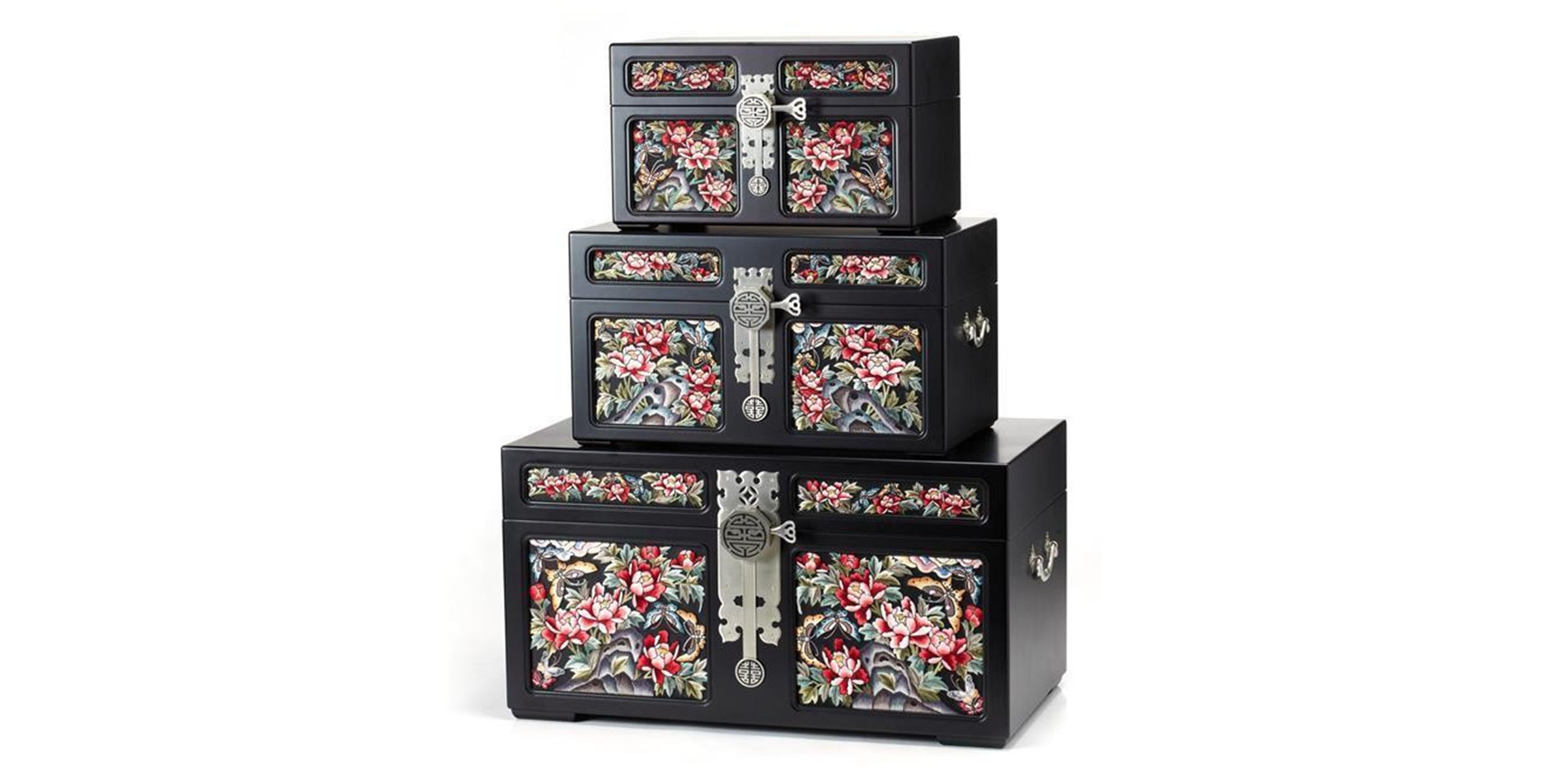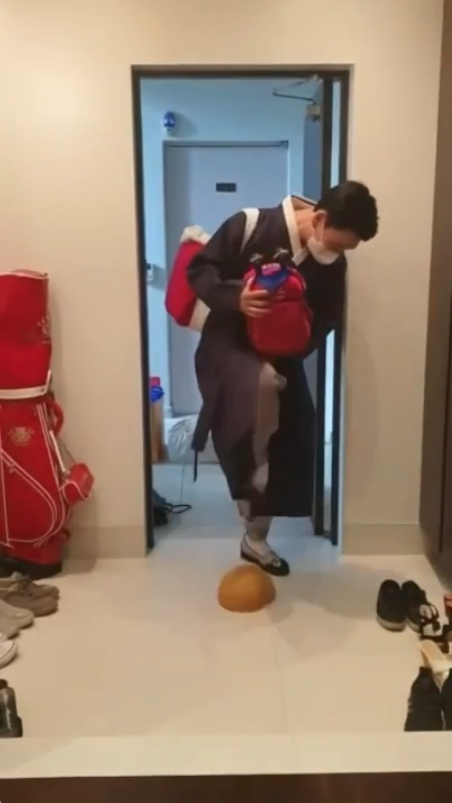Weddings in Korea: Part 3 Hahm Coming
Hahm (함) is probably the most Korean and traditional event held in Korean weddings. As mentioned in previous articles, weddings in Korea are about more than just two people coming together to make a family; it also means that they have been approved and accepted by each other’s families. Hahm is a way for the groom to show appreciation for being accepted as the bride’s husband, usually held a week before the big wedding day. Hahm literally refers to a rectangular box, usually made of wood. These wooden boxes are given with a few other things as a set of gifts.
Gift Sets
Inside the Hahm
Letter to my parents from my in-laws.
Inside, it is filled with gifts to give to the bride and her family, such as letters written by the groom to the bride's family, called hon-seo, usually containing messages of thanks for approving the marriage and for accepting the groom as their daughter’s life partner.
The five pockets my family and I received from my husband
Five pocket bags, called o-bang joo-meonee (오방주머니), are also included as part of the gift. They represent wishes for good luck to come in from five different directions. The red bag should contain red beans to chase away bad spirits, while the yellow bag contains yellow beans as a wish for the daughter-in-law to have a kind heart and gentle personality. A blue bag should have glutinous rice (chap-ssal), wishing the man and wife a happy life together ‘til death do they part. Inside a green pocket is a branch of juniper tree, which represents a wish for their healthy and happy future ahead, and a pink one should have cotton seeds to wish for prosperity with children.
Red and blue silk knots
Red and blue silk knots are also part of the gift. Later when the groom comes in, the bride is asked to select between the two silks without looking. Choosing red silk represents having a daughter and blue silk represents having a son.
A pair of ducks represents the bride and groom. They are usually looking in the same direction, meaning that a husband and wife will always look to the same life goals and future. When they get into an argument or a fight, the pair of ducks are set to look in different directions.
Hahm and gift boxes also include sets of jewelry, such as diamonds or rubies, and bars of gold to go around the bride and her family.
My husband breaks the bottle gourd as he enters our apartment.
Welcoming the Groom into the Bride’s Family
Traditionally, the groom's friends and bride’s friends are also part of this big event. Usually the groom’s friend, referred to as hahm-jin-ahbi (함진아비), comes to the bride’s home wearing a squid mask and calls out, “hahm sa sae yo (함 사세요)!” which translates to, “Buy some hahm!” three times. The squid mask is said to chase the evil spirits away. Now the bride and her friends have to wait until he calls out exactly three times.
The bride’s side waits until the hahm arrives, with money prepared to “purchase” the hahm, a bottle gourd for the hahm-jin-ah-bi (함진아비) to break before entering the bride’s house, and siru rice cake (시루떡), on top of which the hahm will be placed. The bride’s side always wants to quickly take the hahm by treating the groom’s side with prepared foods and drinks, but the groom's friends, including hahm-jin-ah-bi, delays his move by saying, “I’ve walked a long way and can no longer move. But if you give me some more treats~.” It's all part of a big, fun performance.
Traditionally, it is also a way Koreans officially announce to their neighbors that the two people are becoming husband and wife. Hahm coming day tends to be very loud and busy with people, as it is considered one of the biggest events in one’s life. Today, the hahm tradition is slowly dying out due to complaints from neighbors, as most residential buildings in Korea are apartments. On my own hahm coming day, due to COVID-19, we didn’t invite friends, but my family and relatives gathered to celebrate my husband coming in; we also didn’t make a lot of noise from the outside. We just started by our apartment door to make it quieter and simpler. Without hahm-jin-ah-bi, my husband himself came wearing the hahm on his back and carrying the gift boxes in his hands.
Hahm placed on top of the rice cake. My husband doing the official bow (큰 절) to my parents.
The hahm was placed on top of the rice cake, and my husband bowed the Official Bow (큰 절) to my parents and exchanged friendly conversations with them while I was waiting inside my room. I came out when opening the gifts inside the hahm.
Me in yellow jeo-go-ri and dang-gi hairstyle.
The Dress and Hair
There are official dresses worn during this entire event. For the bride, it's usually a yellow jeo-gori (the top part of hanbok) and dang-gi hairstyle. The dang-gi hairstyle represents an unmarried, young girl. In history, the day of marriage—hahm coming day—was the last day a girl could wear this hairstyle.
Closing Note: Hahm Tradition Today
Today, the hahm culture is fading, as many people prefer to have a simpler preparation period for their wedding. Instead of hahm, it’s more common to exchange gifts between each other's parents or just between the bride and groom. For instance, a watch for the groom and a handbag for the bride is considered a simpler way of showing appreciation. I, personally, think having a bit of traditional taste to a modern style is nice to have. Sometimes it provides an opportunity to think about the meanings of the gifts and each step performed for hahm coming. There is value in the thought given to it too.
Edited by Omani








